
The Xiaomi 15S Pro definitely has an important spot in the history of Chinese smartphones. Not that its camera is exceptionally powerful or the screen is incredibly good, but simply because the SoC inside is Xiaomi’s best and self-developed processor. Compared to other flagship processors, what can the XRING O1 bring us, and what might be less competent?
Compared to the sibling, the 15 Pro, a phone with Qualcomm Snapdragon 8 Elite, we can clearly see where the XRING O1’s CPU, GPU, NPU, and ISP stand on the global stage.
Hardware Specifications
To understand the performance of the XRING O1, we must check the inside first. This is the dieshot of the XRING O1. Thanks to TSMC’s N3E process, this chip achieves a remarkably high level of integration. Compared to other flagship SoCs, its die area is even smaller.
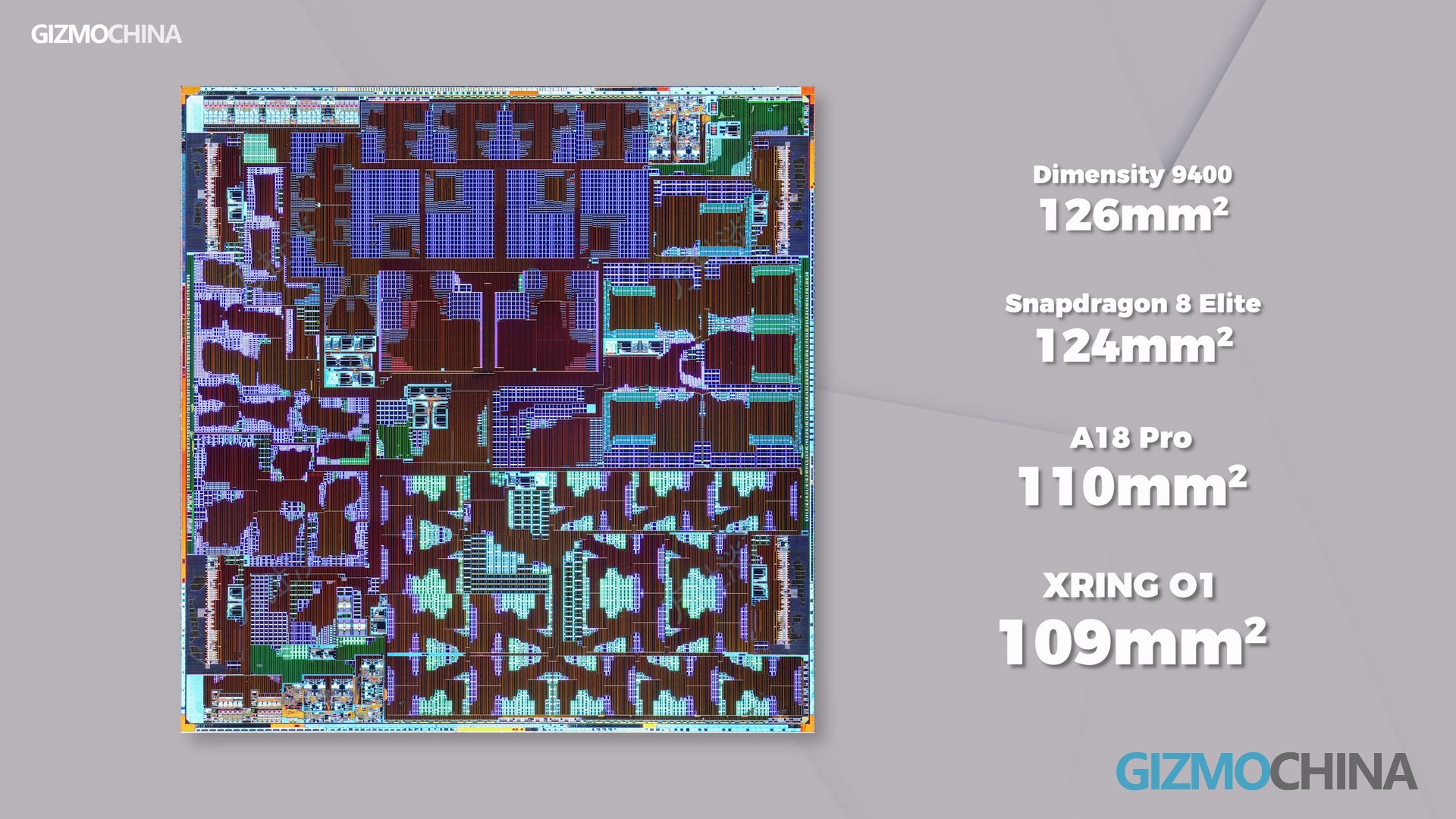
However, the trade-off is that the modem is not integrated into the chipset. The XRING O1 uses a standalone MediaTek T800 modem chipset instead of Xiaomi’s in-house Surge T-series modem. After all, it even took six years for a giant like Apple to have its first 5G modem. So Xiaomi still has a long way to go in the 5G modem race.
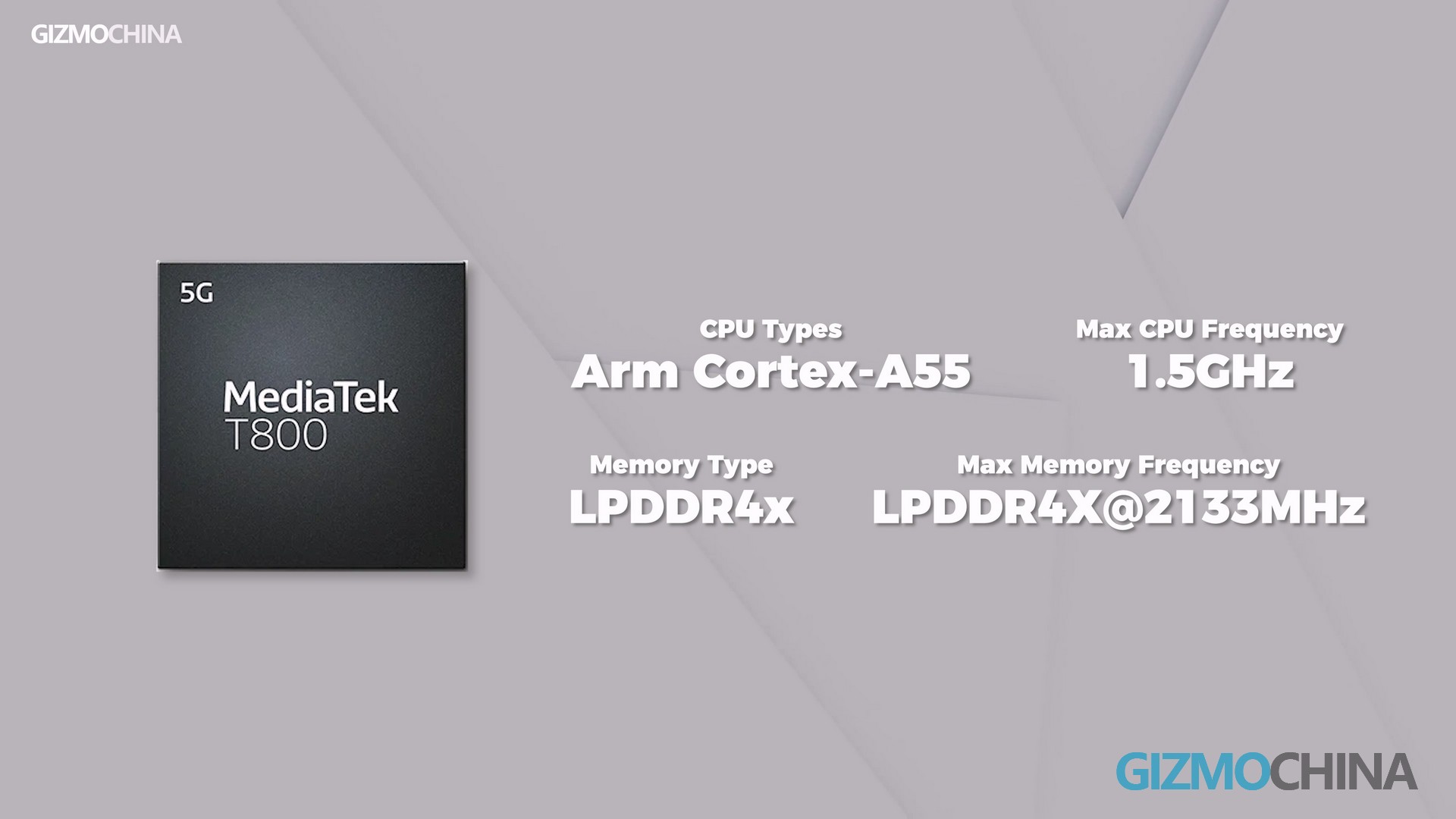
The CPU unit sits on the upper half of the dieshot. It features 10 cores across four different ARM architectures and clock speeds. Apart from the two A520 cores, all others use ARM’s latest and most advanced architectures. The CPU’s peak frequency can reach an impressive 3.9 GHz.
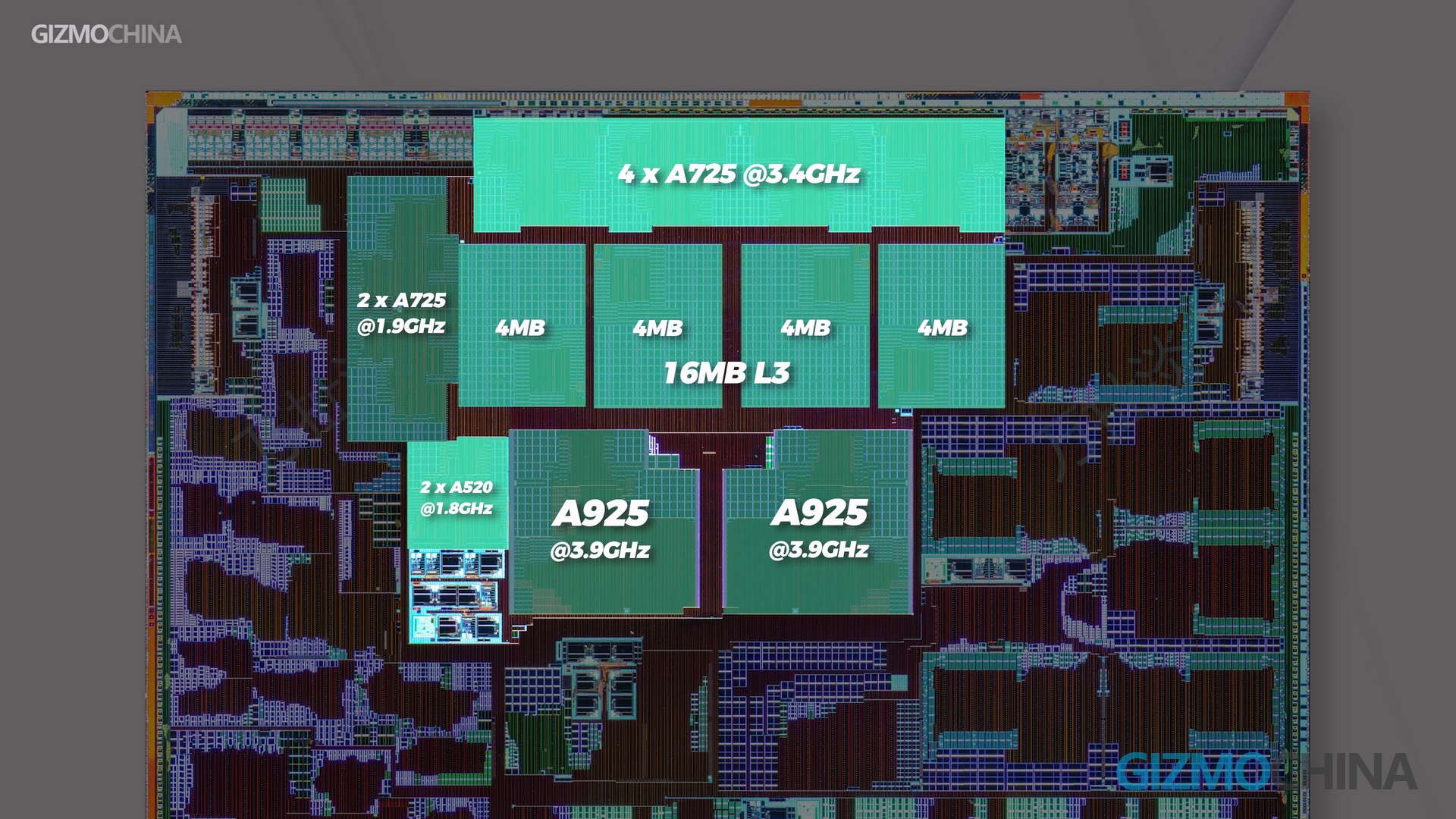

The GPU unit is also unusually large, packing a 16-core ARM G925 GPU—even more ridiculous than the Dimensity 9400’s 12-core GPU. Benchmark tests reveal that the XRING O1’s CPU performance slightly outperforms the Snapdragon 8 Elite, while its GPU falls just a tad behind the 8 Elite.
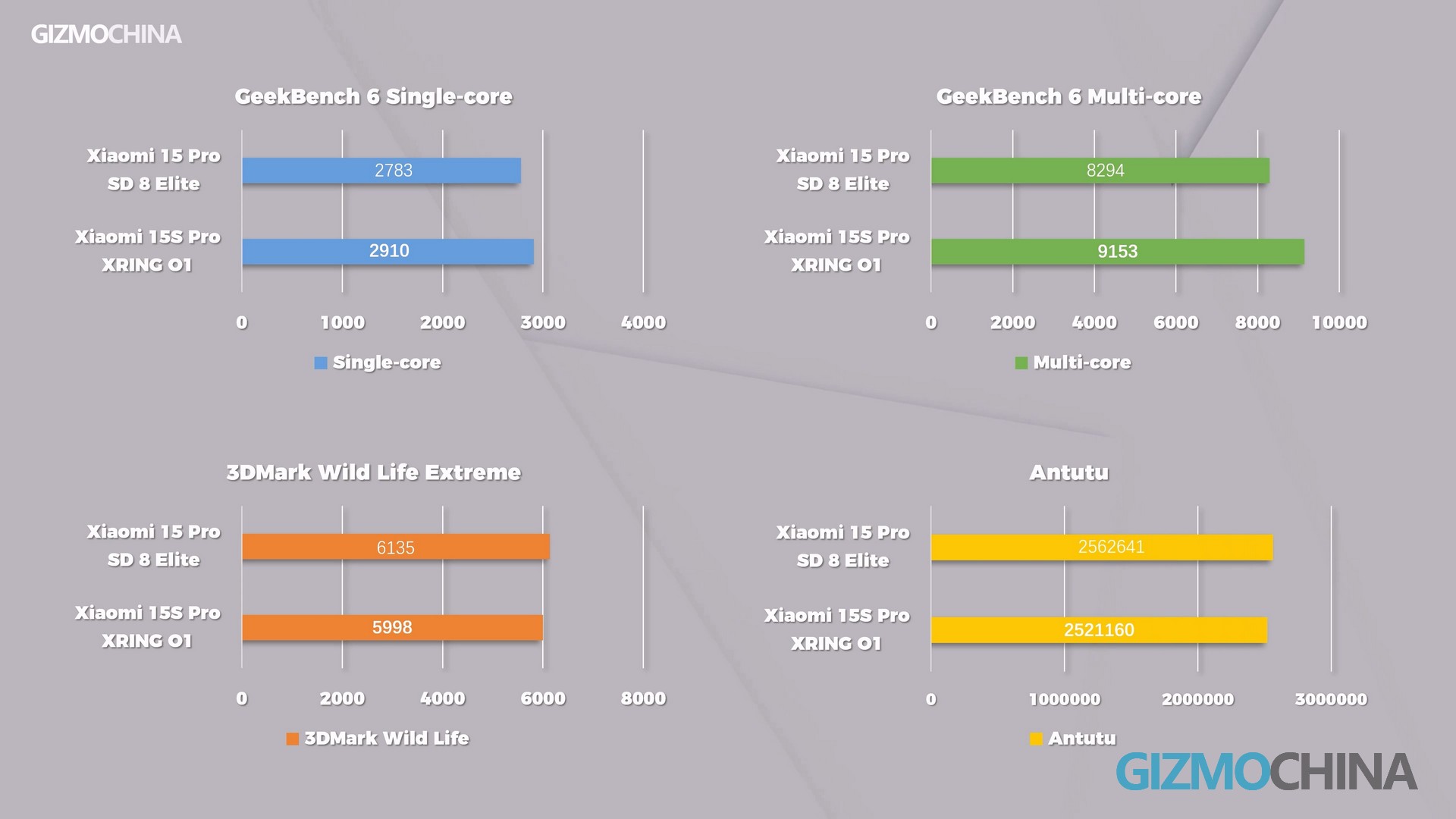
On paper alone, the XRING O1 already has what it takes to compete with Apple, Qualcomm, and MediaTek. But whether it can truly win depends on real-world gaming performance. For the 15S Pro, we prepared three games to test the overall experience and power efficiency under different workloads.
Performance & Gaming Tests
Let’s start with the highest load game—Honkai: Star Rail. Although the processor begins throttling after 4 minutes, the frame rate gradually drops to 40 FPS and stabilizes, resulting in a relatively smooth gaming experience. Both temperature and power consumption are well-controlled, placing it firmly in the “excellent” category.
In contrast, the 15 Pro’s performance falls short. Whether in average power consumption, temperature, or frame rate, it fails to outperform the XRING-powered 15S Pro. Additionally, the 15 Pro shows significant frame rate fluctuations, making stutters noticeably perceptible during gameplay.
I believe Xiaomi has optimized this game specifically for the 15S Pro, with the XRING O1 playing a key role in delivering such a substantial improvement in gaming performance.
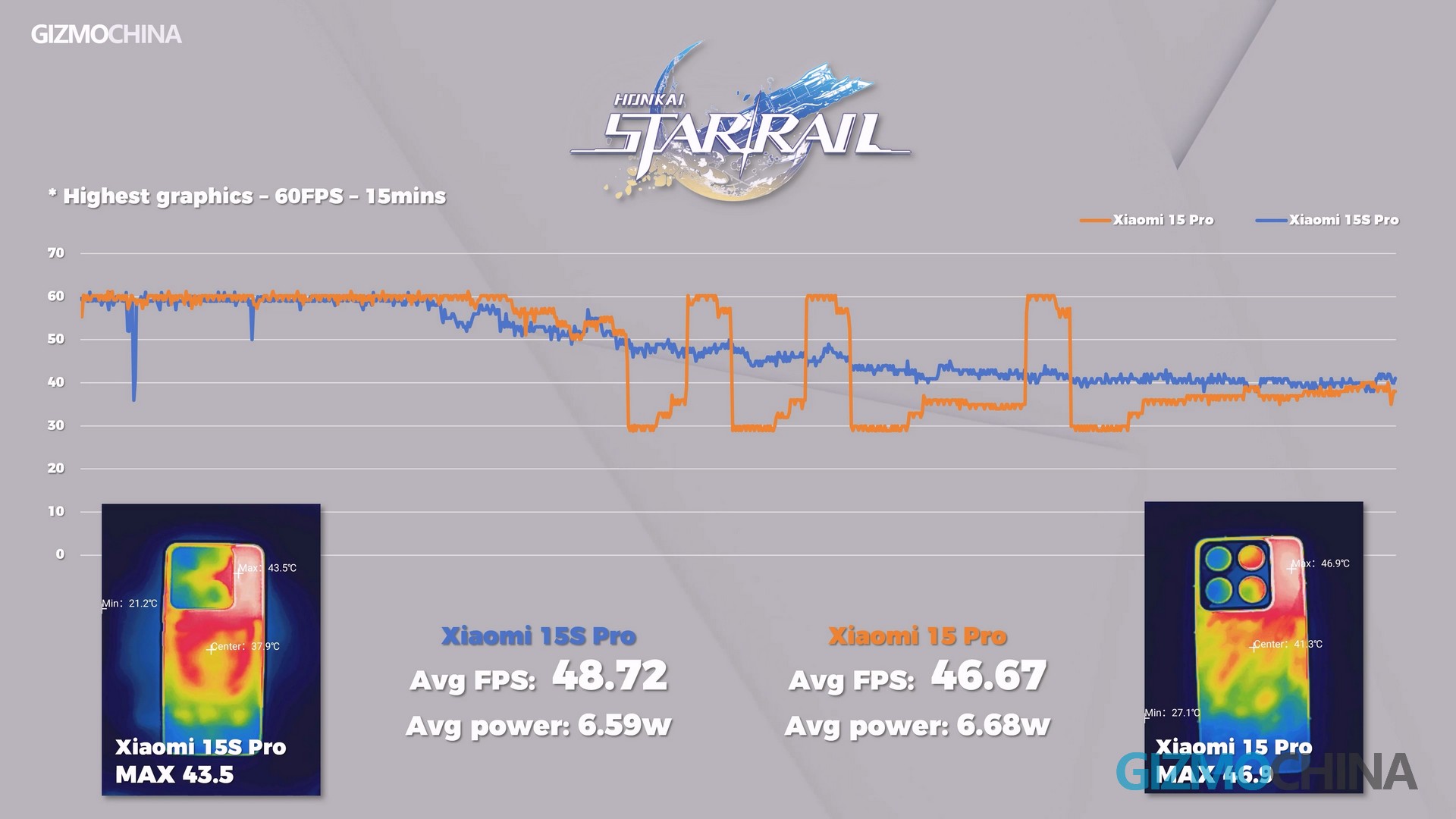
For flagship phones, Genshin Impact is no longer a particularly demanding game—both devices handle it effortlessly at a stable 60 FPS over extended sessions. Our focus here is on power efficiency and thermal performance. Once again, the 15S Pro wins; it can maintain similar frame rates while running cooler and more efficiently. The same trend continues in PUBG Mobile, with almost the same result.

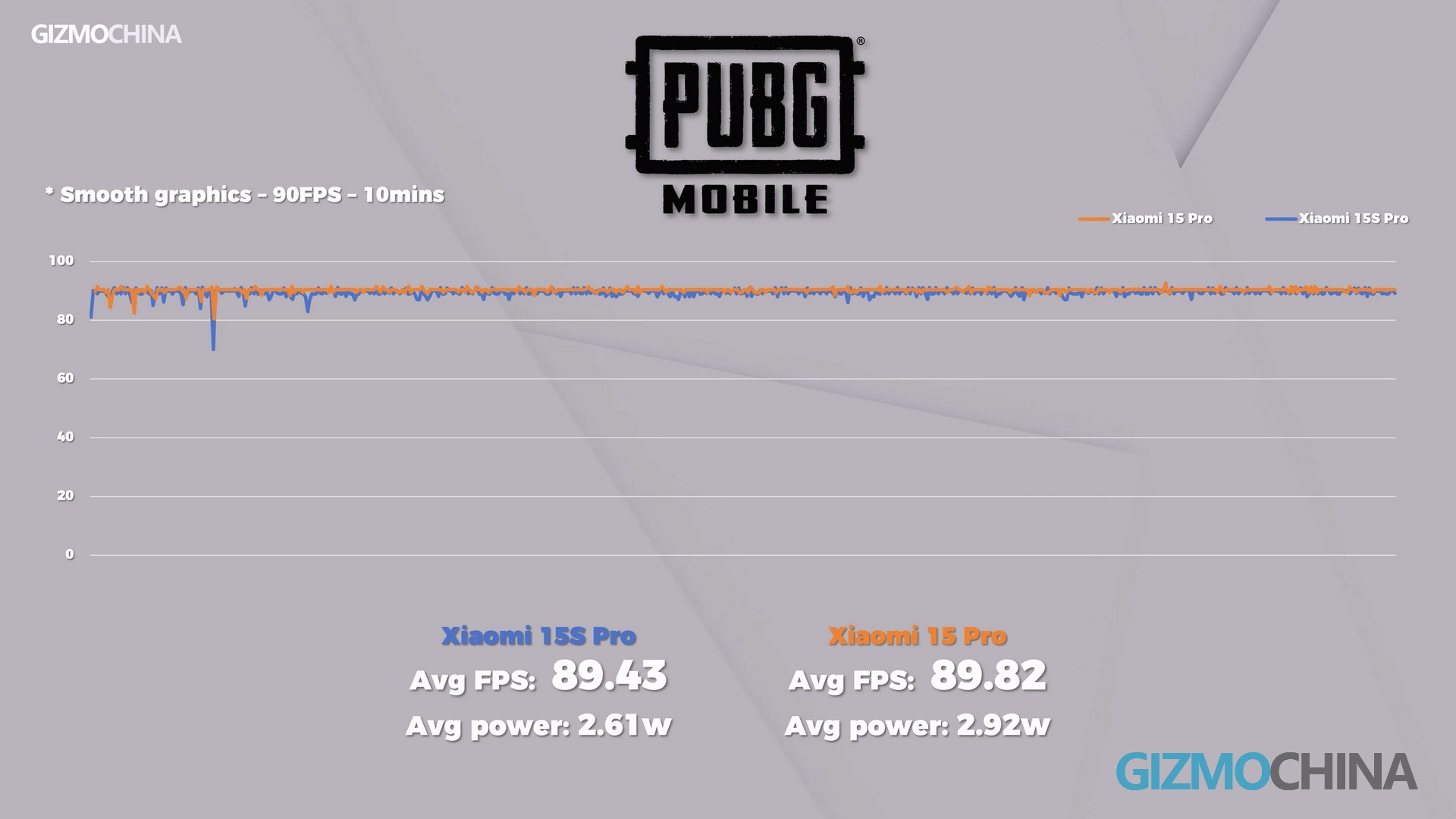
With Wi-Fi, the XRING O1’s power and thermal management are truly world-class, offering slightly better gaming performance than the Snapdragon 8 Elite. So why do I say ” With Wi-Fi”? Because the XRING O1 lacks an integrated 5G modem.
5G Modem & Battery Life
Since the 15S Pro’s modem is a chipset separate from the SoC, its power consumption on 5G networks is inevitably higher than devices with integrated modems. But exactly how much higher? I ran some tests, under the same conditions, when switching from Wi-Fi to 5G gaming, the 15S Pro’s average power consumption was higher than the 15 Pro’s.
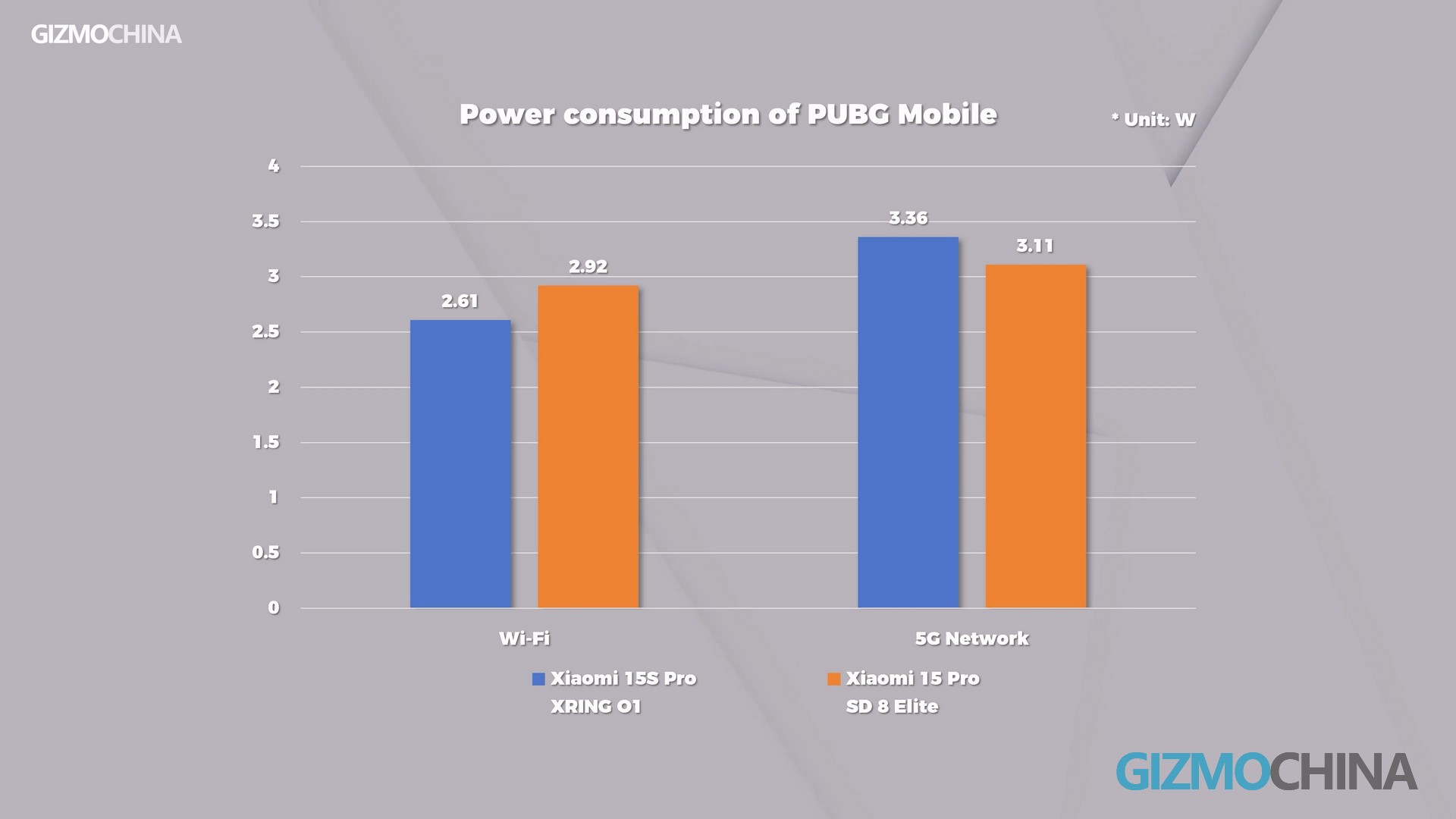
I also tested daily Apps like video calls and TikTok on 5G networks. The 15S Pro’s power consumption was consistently higher, too.
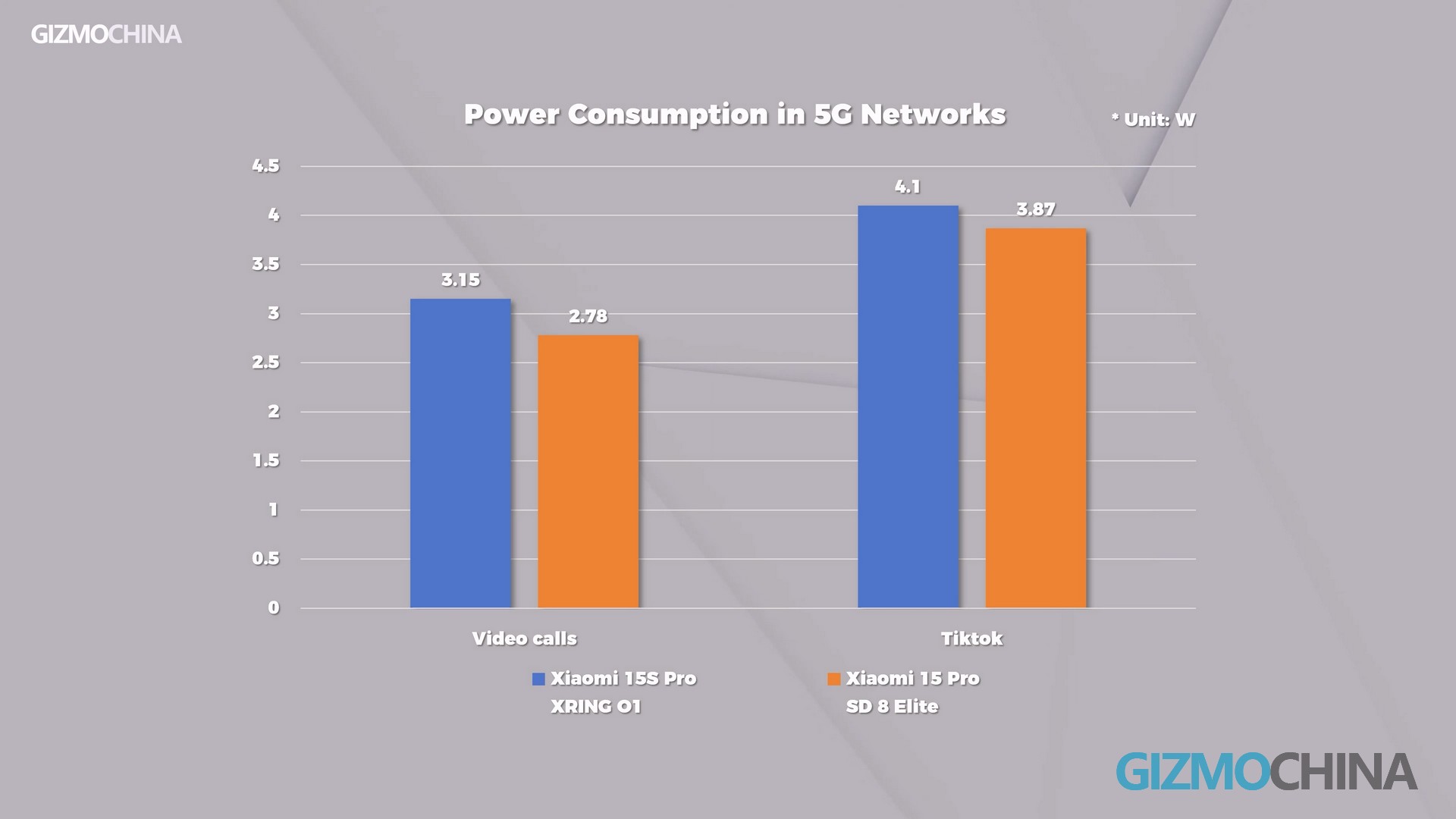
So when some people ask me about the Xiaomi 15S Pro’s battery life, I can only say it depends on your usage environment. If you’re mostly in Wi-Fi environments, then the 15S Pro’s battery life will outperform the 15 Pro’s. On the contrary, when going from 100% to empty on 5G networks, the 15S Pro’s battery life lasts about half an hour shorter than the 15 Pro’s.
ISP
The XRING O1’s ISP significantly impacts camera performance, both positively and negatively. Let’s start with the positives.
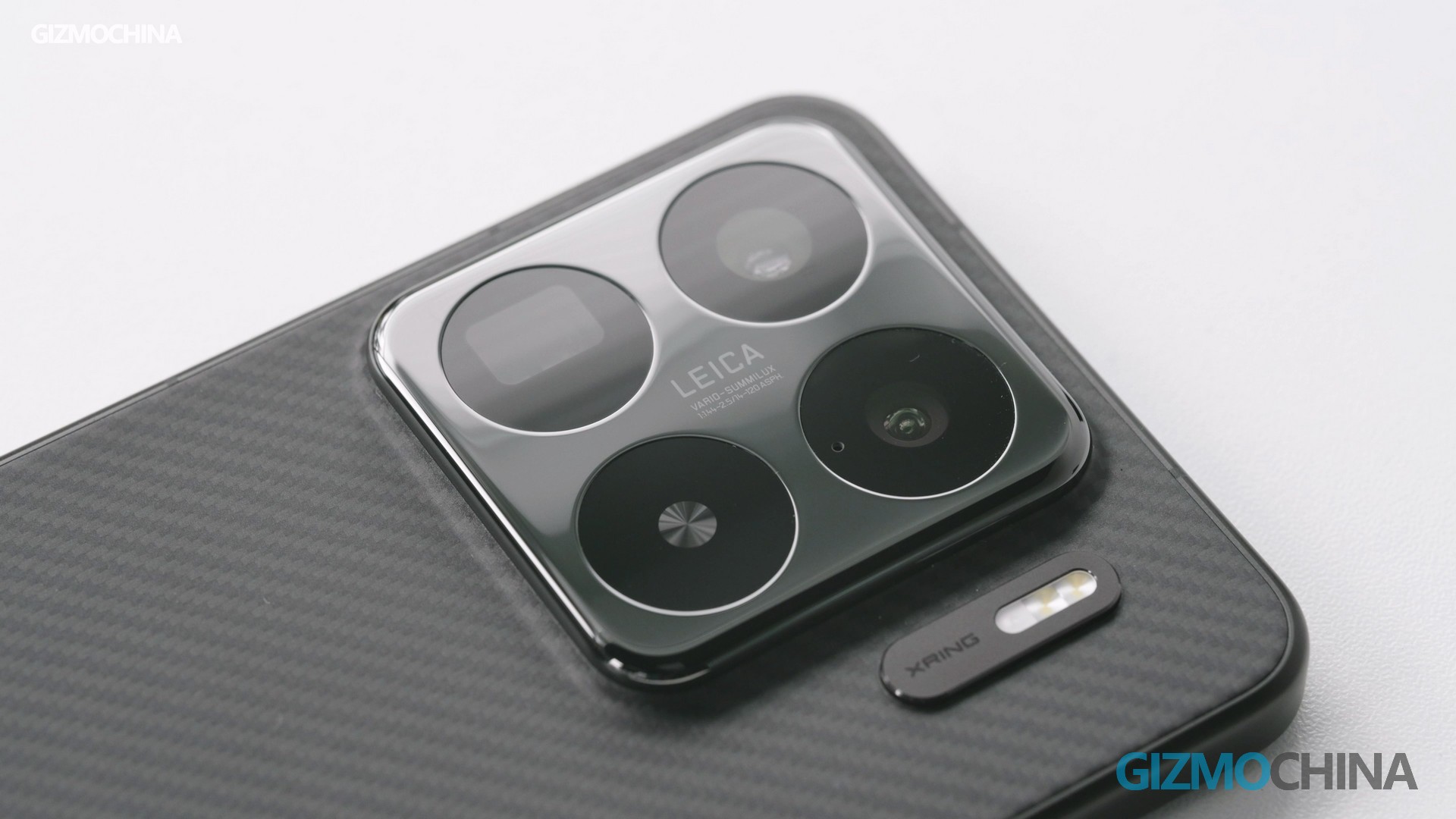
The most improved camera on the 15S Pro is this 5x telephoto camera, with very accurate white balance. And the weaker the light, the greater the advantage. The main camera’s dynamic range is also better, there are more details in highlights. Videos are sharper with less cropping. So the image stabilization becomes weaker.
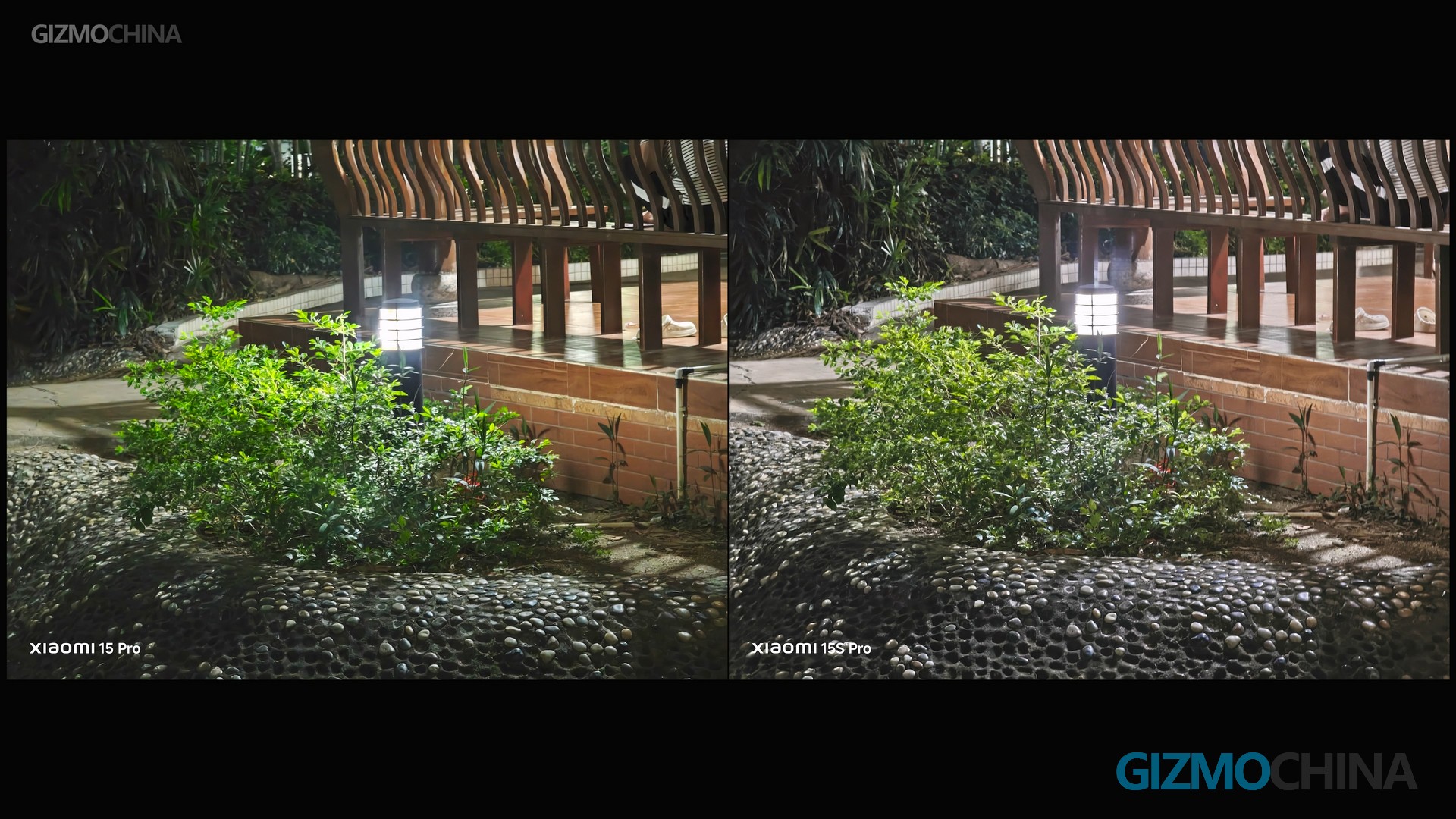
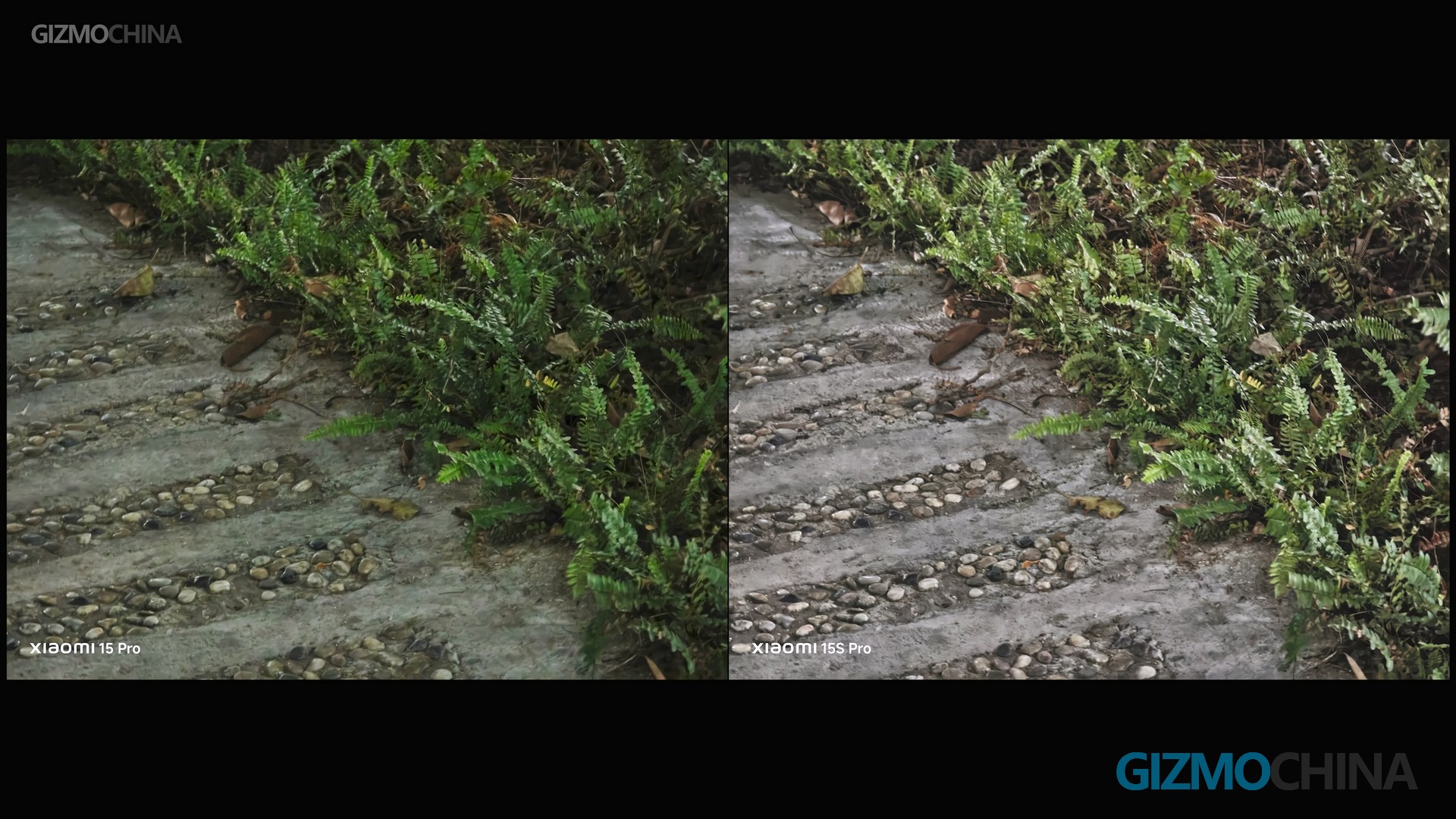
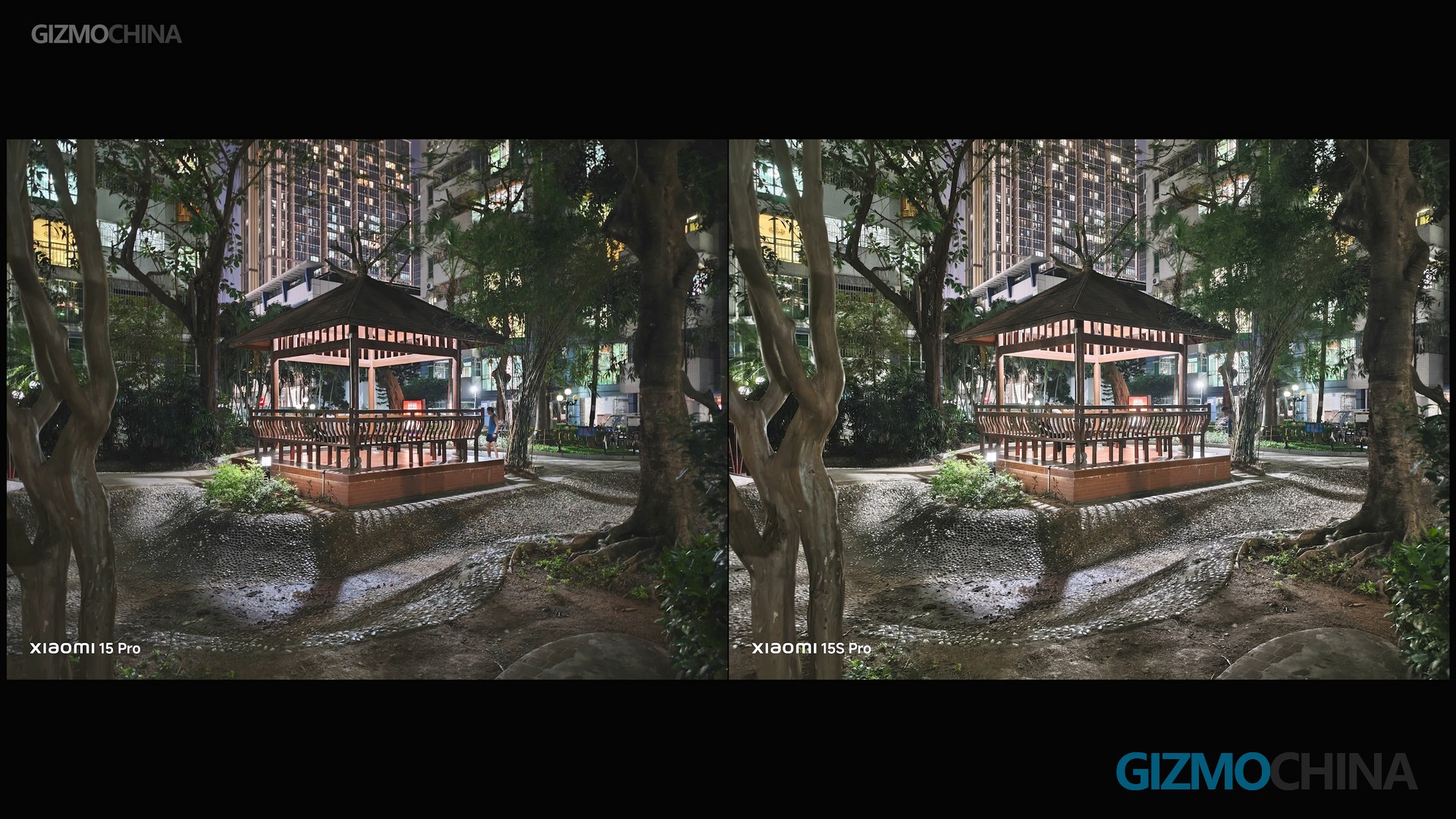
In low light, the 15S Pro’s exposure will be higher. At 30fps, it may not be very noticeable, but when switching to 4K 60fps, you can clearly see the XRING’s advantage.
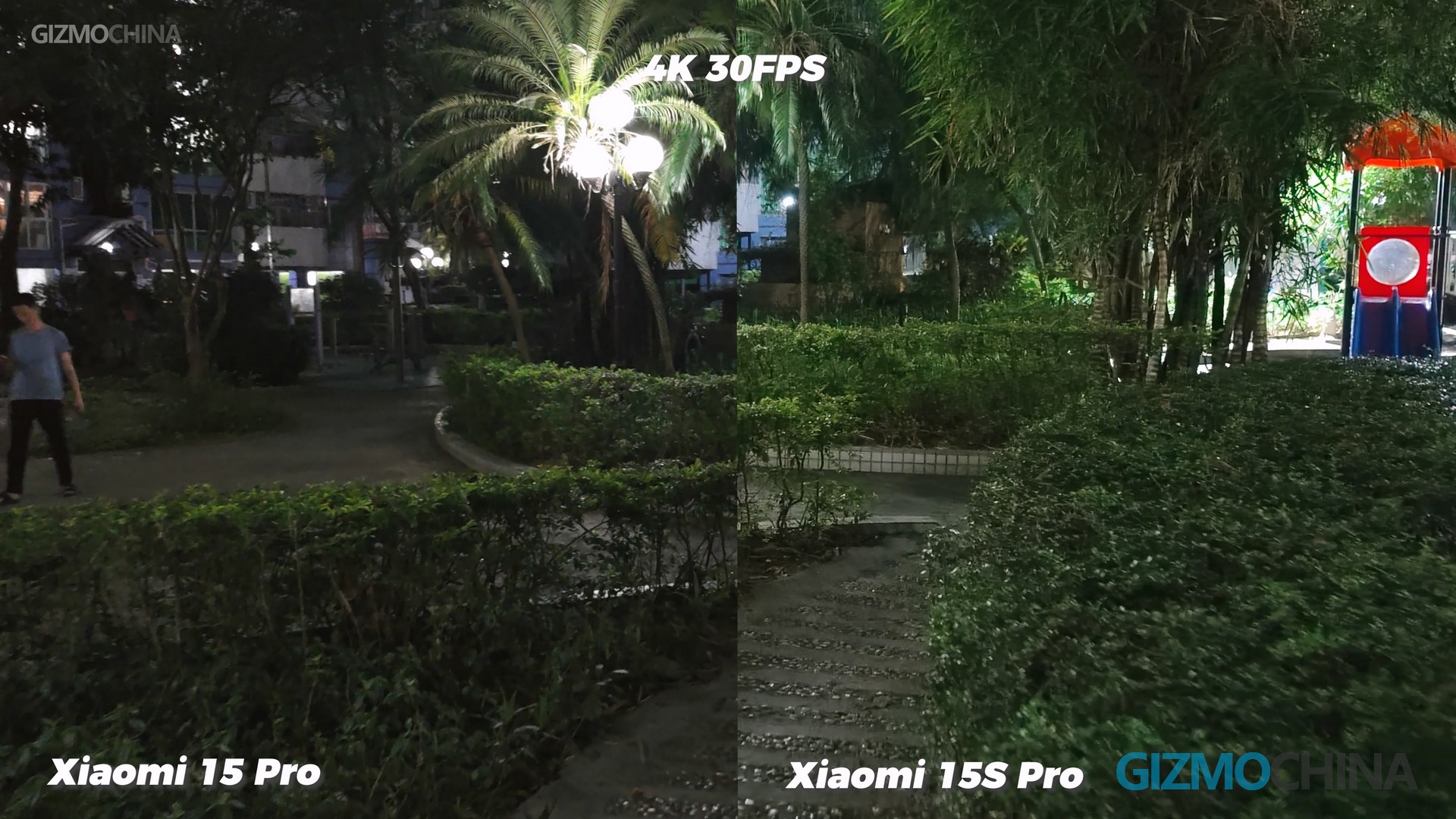
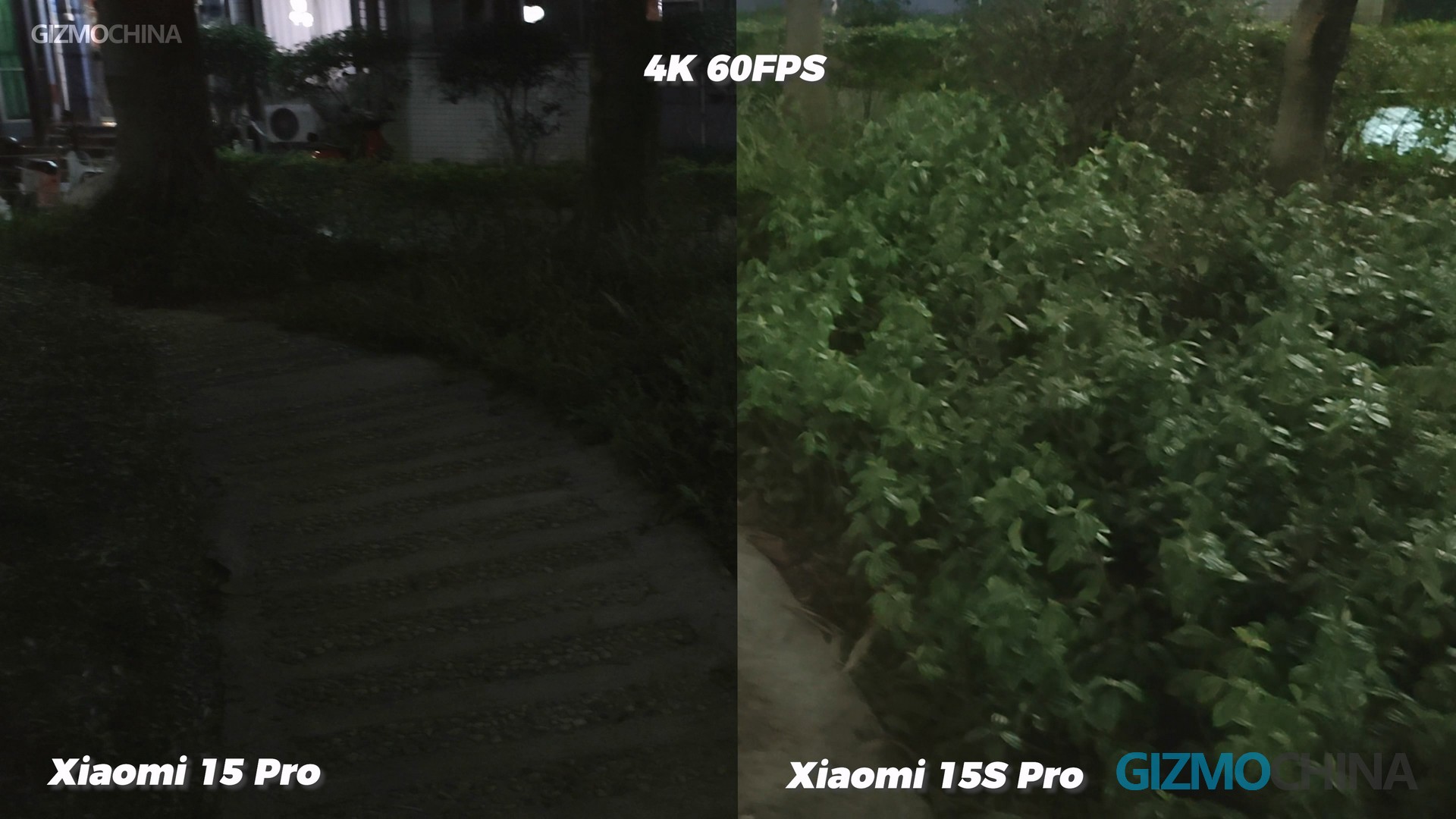
Unfortunately, the 15S Pro’s Leica tone has been weakened again, with not as high contrast. And the green problem in the night scene has also appeared on the 15S Pro’s ultra-wide camera, while the 15 Pro’s white balance is done very well. The viewfinder also underexposes in low light, and the clarity drops significantly.
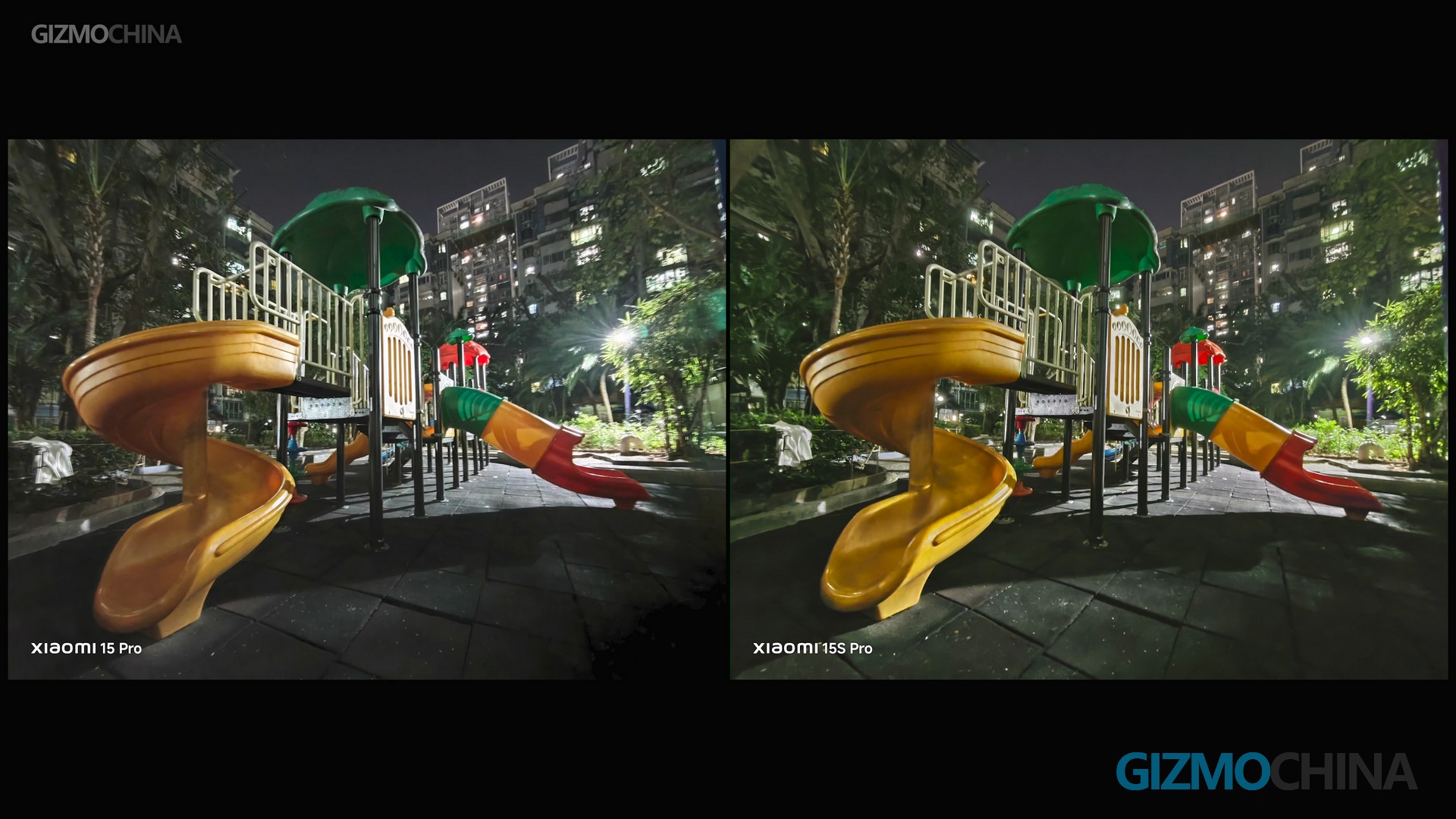
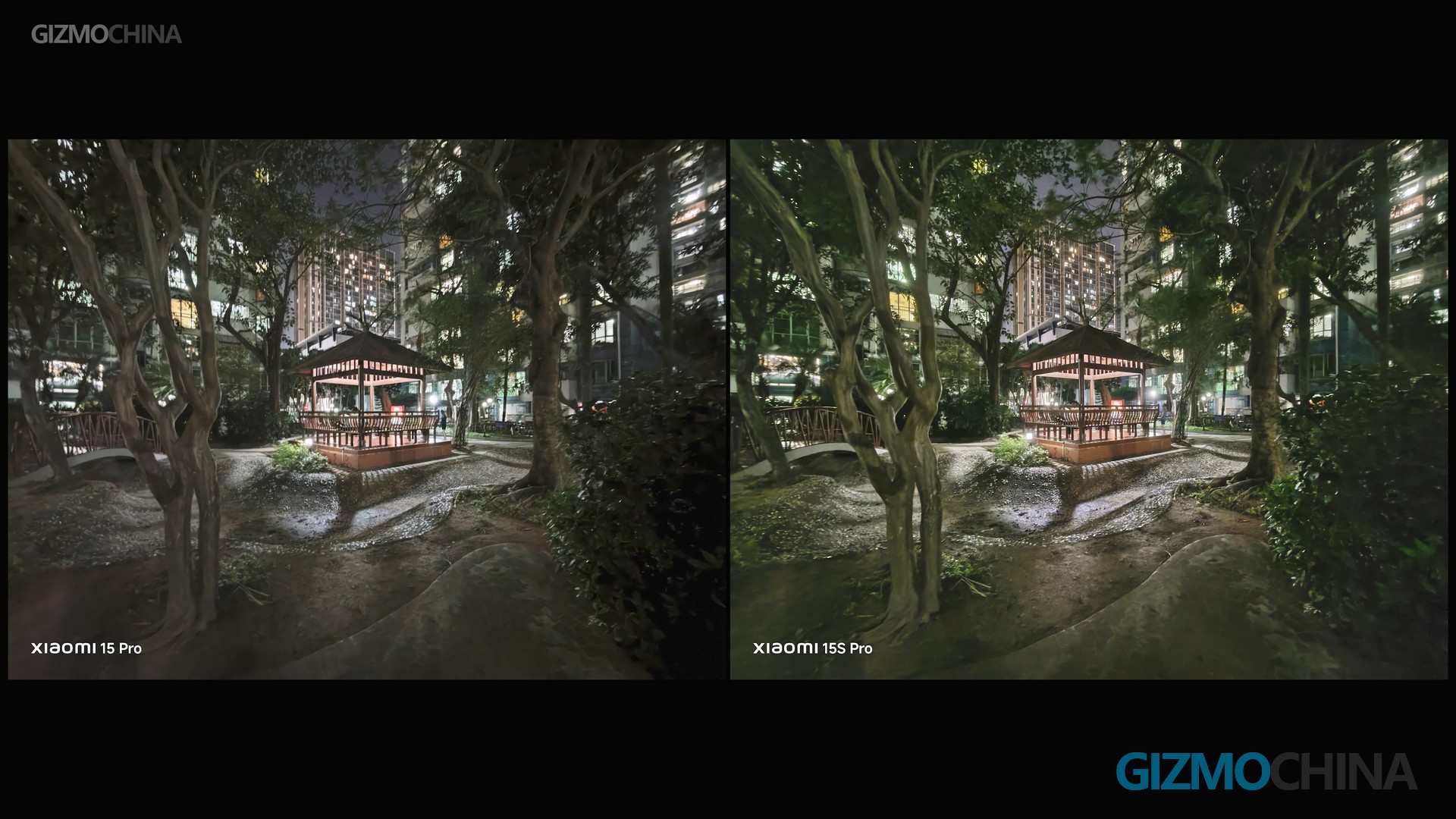
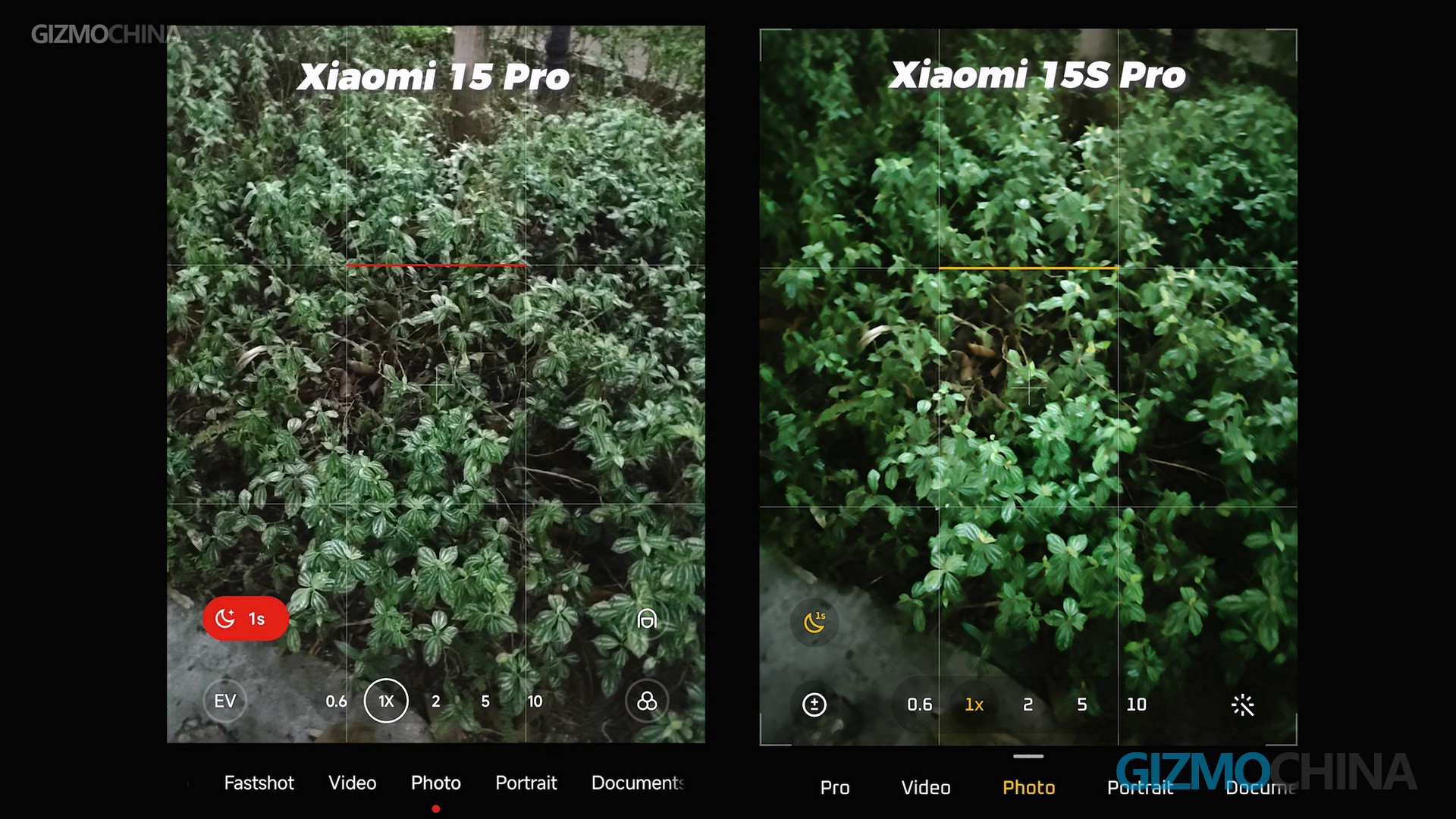
I would say the O1’s ISP isn’t as powerful as imagined – it still needs some time to defeat Qualcomm.
Bluetooth & NPU
Music enthusiasts may worry about aptX-related Bluetooth protocols not being available on the 15S Pro. Xiaomi certainly wouldn’t disappoint earbuds users – they’ve licensed nearly all mainstream Bluetooth protocols. Whatever works on the Xiaomi 15 Pro will be the same on the 15S Pro too.
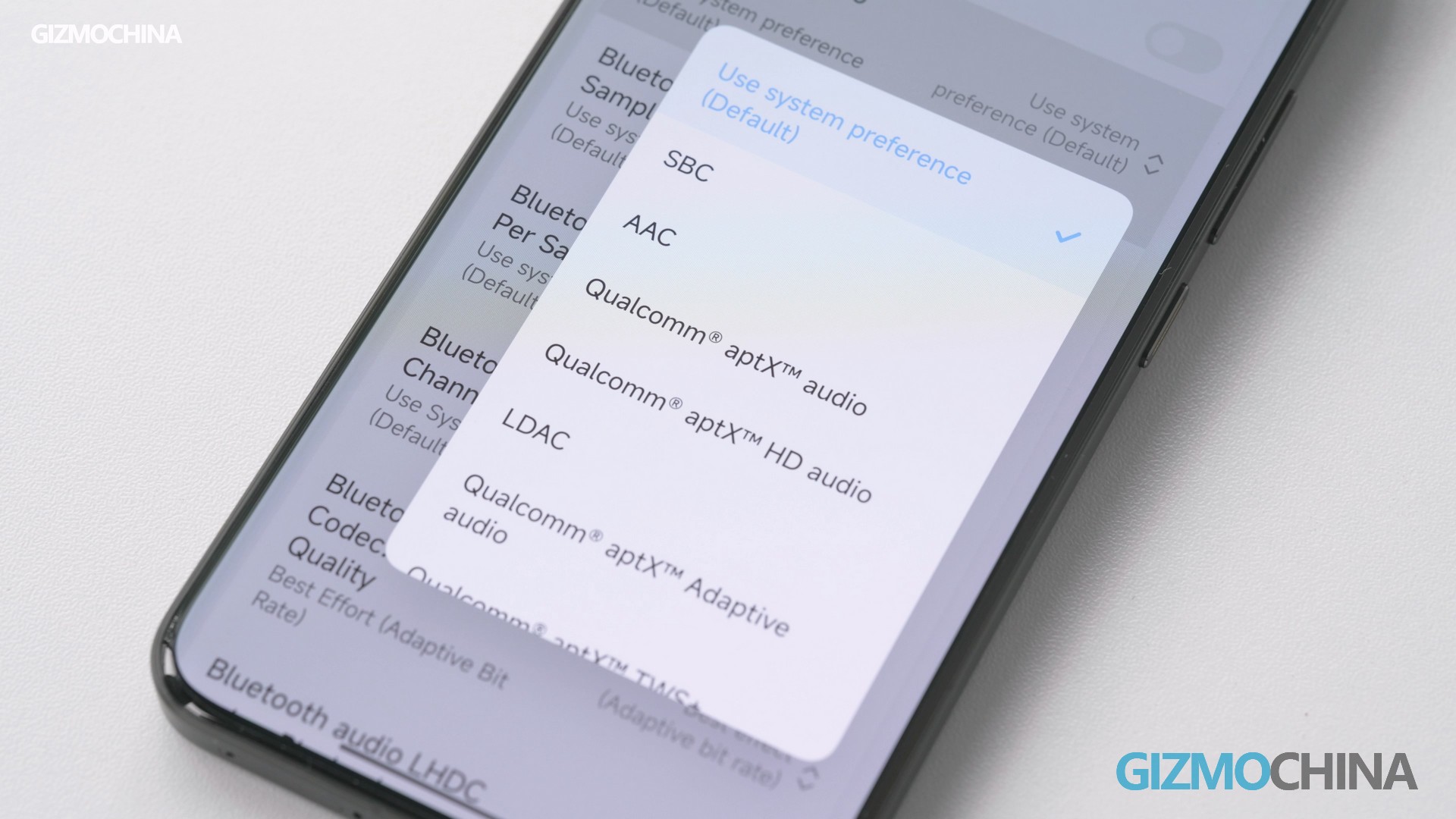
The XRING O1 features a 6-core NPU with 10MB cache, delivering computing power up to 44 TOPS. Although this NPU is powerful, Xiaomi hasn’t utilized it for many features. Xiaomi HyperAI still can’t work offline – all AI-related functions become unavailable without an internet connection.
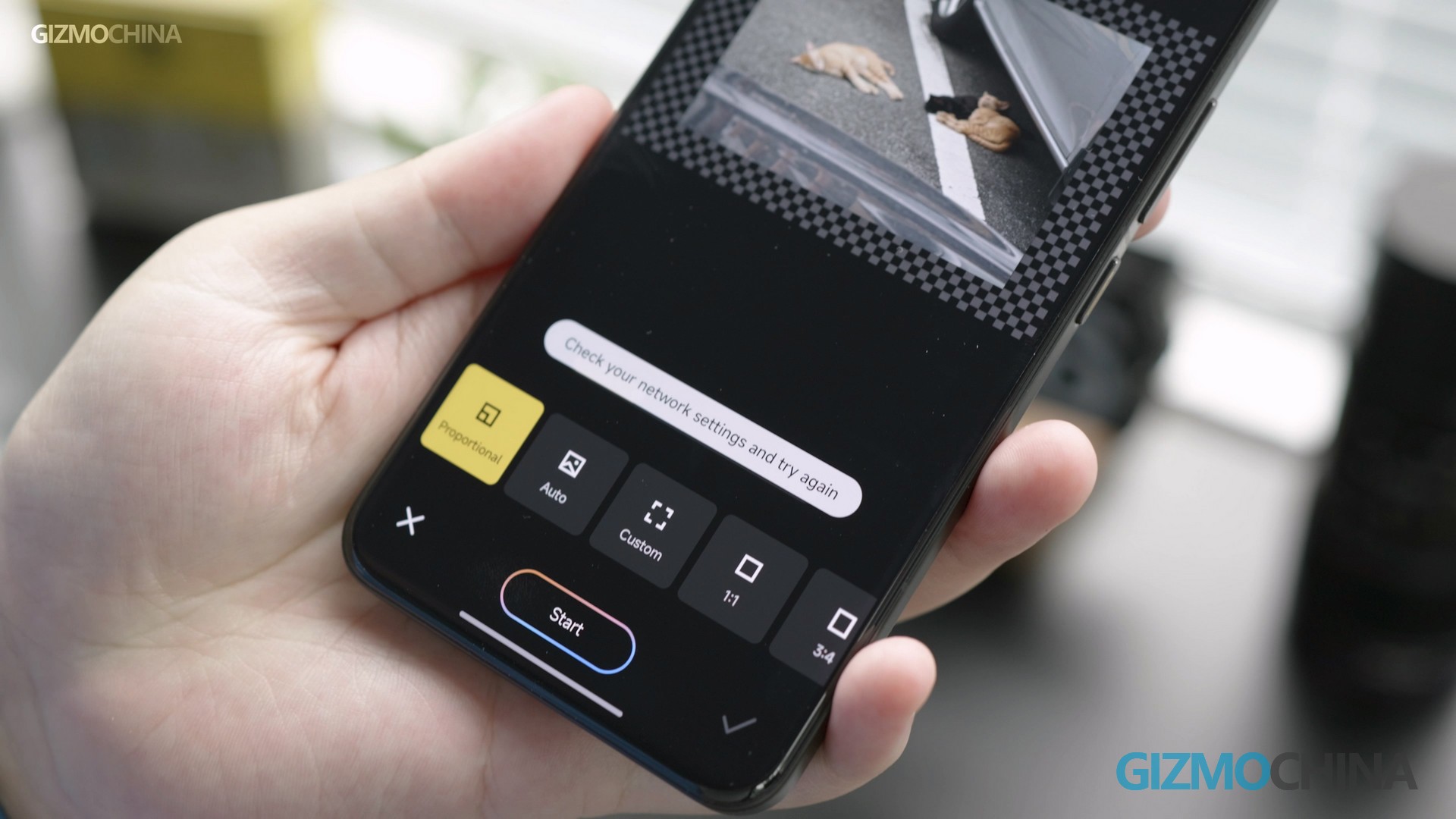
Even when trying to benchmark this NPU’s AI performance improvements, scores are low due to Apps not being optimized for this new chipset. Hopefully, the HyperAI will be significantly better on the XRING O2 and truly unleash this NPU’s full potential across more Apps.
Others
While carefully testing whether the Xiaomi 15S Pro has other special features compared to the 15 Pro, I did find some differences. For example, the 15S Pro cannot keep AOD (Always-On Display) constantly active.

The ray tracing performance of XRING O1 also falls short of the Snapdragon 8 Elite. Using Geekerwan’s ray tracing demo for testing, the frame rate difference is significant.
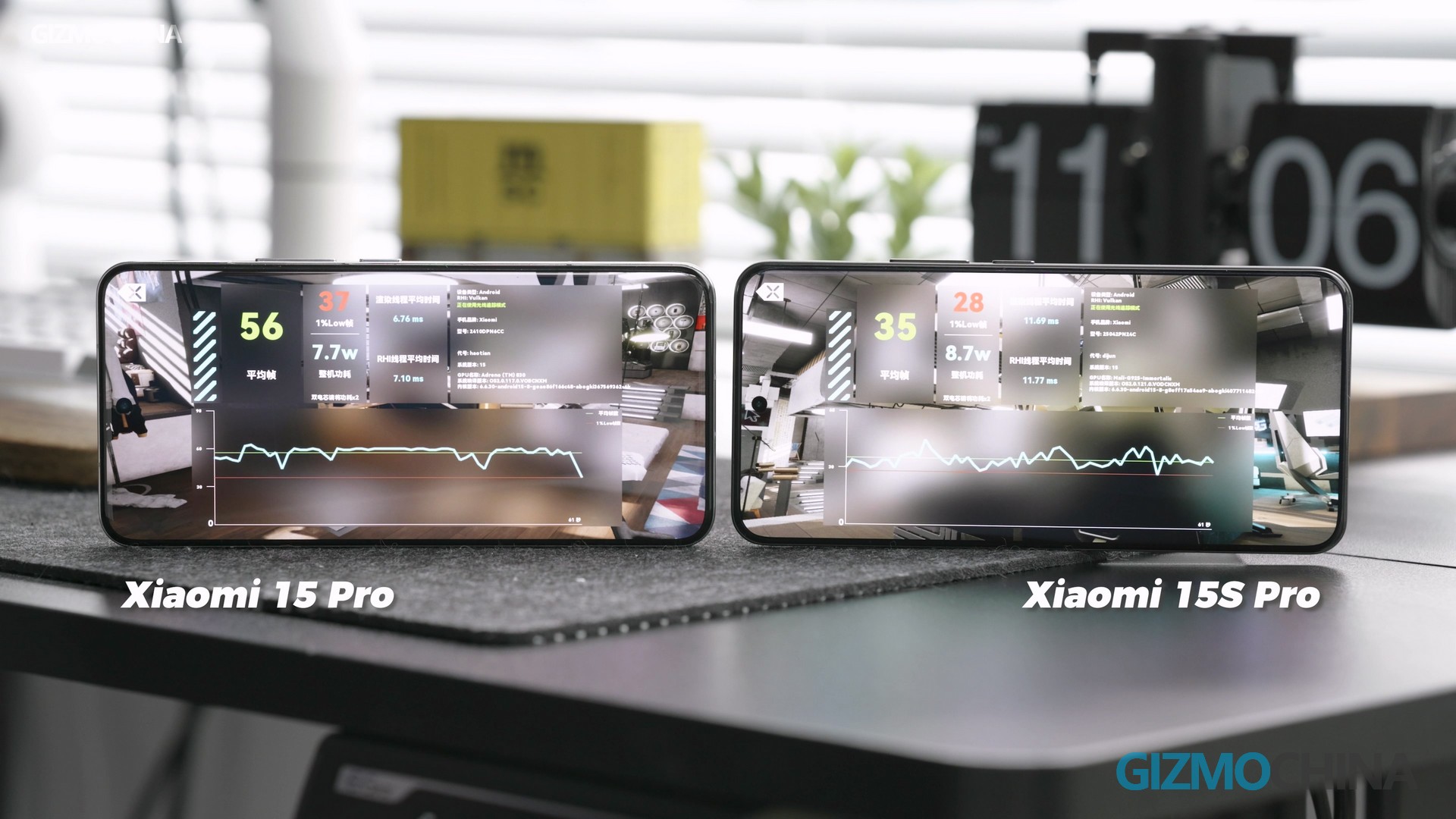
However, XRING excels in other areas, such as HDR video decoding, WiFi-7 support, and GMS compatibility – these show very little difference compared to phones using Qualcomm chips.
Conclusion
So, the XRING O1 has undoubtedly become one of the world’s most powerful mobile processors. It is excellent in nearly all aspects, with only one notable weakness: subpar battery life on 5G networks. The good news is that Xiaomi has already developed a 4G modem, currently used in their smartwatches. Integrating a 5G modem into XRING is just a matter of time. The birth of the Xiaomi 15S Pro is to show the world that Xiaomi can develop its own chips – and do it just as well as anyone else.
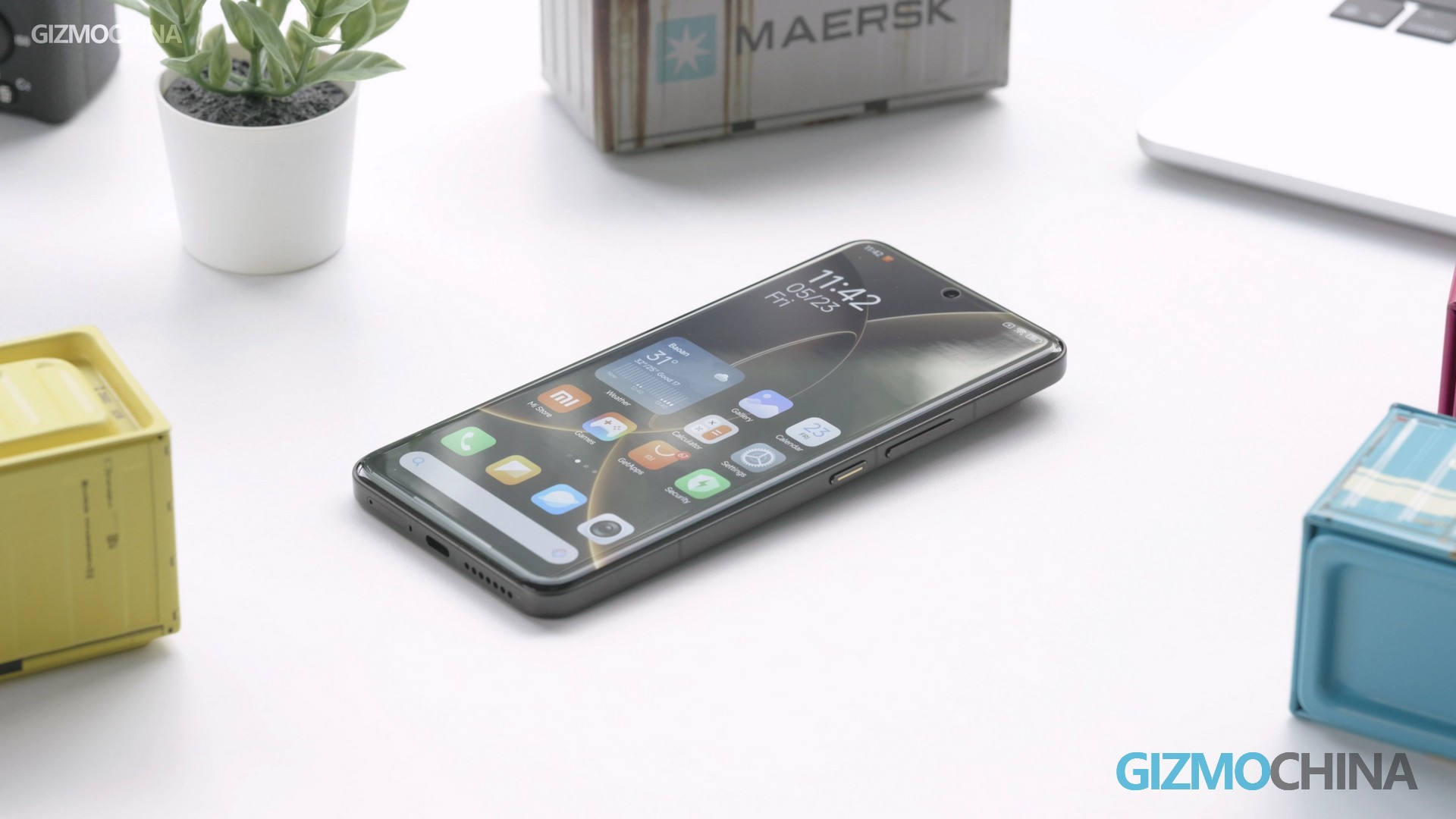
XRING O2 is already on the way, with a clear goal this time: to become the world’s number one mobile platform. The Xiaomi 15S Pro will likely not have a global release, so if you’re a Xiaomi fan wanting to support the XRING team, you can check it out at GeekWills.
The post XRING O1 Review: Next Stop: World No.1! Xiaomi 15S Pro Performance Test appeared first on Gizmochina.








